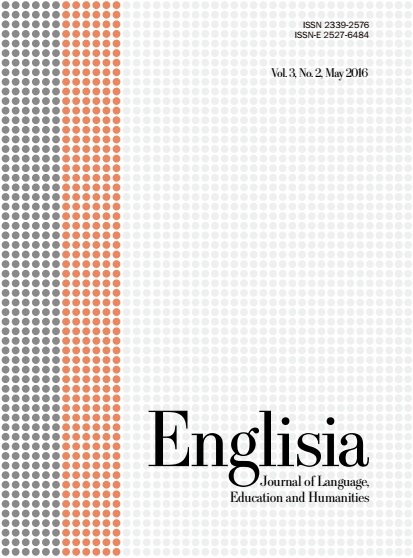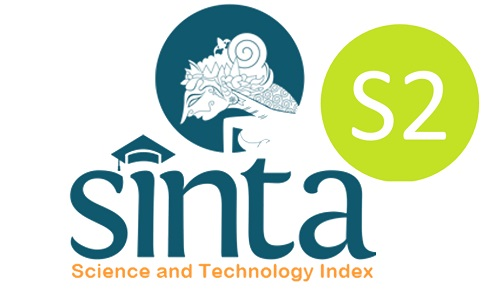IRONY IN CHARLES DICKEN'S OLIVER TWIST
DOI:
https://doi.org/10.22373/ej.v3i2.1026Keywords:
Oliver Twist, verbal irony, situational irony, dramatic ironyAbstract
This paper describes the types of irony used by Charles Dickens in his notable early work, Oliver Twist, as well as the reasons the irony was chosen. As a figurative language, irony is utilized to express one’s complex feelings without truly saying them. In Oliver Twist, Dickens brought the readers some real social issues wrapped in dark, deep written expressions of irony uttered by the characters of his novel. Undoubtedly, the novel had left an impact to the British society at the time. The irony Dickens displayed here includes verbal, situational, and dramatic irony. His choice of irony made sense as he intended to criticize the English Poor Laws and to touch the public sentiment. He wanted to let the readers go beyond what was literally written and once they discovered what the truth was, they would eventually understand Dickens’ purposes.Downloads
References
Dickens, C. (2003). Oliver Twist. London: Penguin Books
Di Yanni, R. (2002). Literature: Reading Fiction, Poetry and Drama. New York: McGraw Hill Company
Dramatic Irony. (n.d.). Retrieved March 03, 2017, from https://literarydevices.net/dramatic-irony/
Figure of Speech. (n.d.). Retrieved March 03, 2017, from http://www.dictionary.com/browse/figure-of-speech
Irony. (n.d.) Retrieved February 11, 2017 from https://literarydevices.net/irony/
Literature. (n.d.). Retrieved March 03, 2017 from http://www.dictionary.com/browse/literature
Marpaung, Rama R. (2010). An Analysis of Racial Issues in Some Langston Hughes’ Poems, Thesis. Medan: University of North Sumatera. Retrieved from http://repository.usu.ac.id/bitstream/123456789/13371/1/10E00485.pdf
Rahmi, M. (2015). The Literary Analysis of Irony in Oliver Twist: a novel by Charles Dickens, Unpublished Thesis. Banda Aceh: Universitas Muhammadiyah Aceh
Reyes, A., Rosso, P., & Buscaldi, D. (2012). From humor recognition to irony detection: The figurative language of social media. Data & Knowledge Engineering, 74, 1-12.
Roberts, R. M., & Kreuz, R. J. (1994). Why do people use figurative language?. Psychological Science, 5(3), 159-163.
Situational Irony. (n.d.). Retrieved February 11, 2017 from https://literarydevices.net/situational-irony/
Thompson, V. (2014, May 03). What Impact Does the Irony Have Upon the Reader? Retrieved March 03, 2017, from http://education.seattlepi.com/impact-irony-upon-reader-7000.html
Understatement. (n.d.). Retrieved February 11, 2017, from https://literarydevices.net/understatement/
Critical Concepts: Verbal Irony. (n.d.). Retrieved February 11, 2017 from http://www.k-state.edu/english/baker/english320/cc-verbal_irony.htm
Downloads
Published
Issue
Section
License
Proposed Policy for Journals That Offer Open Access
Authors who publish with Englisia journal agree to the following terms:
- Authors retain copyright and grant the journal right of first publication with the work simultaneously licensed under a Creative Commons Attribution License that allows others to share the work with an acknowledgement of the work's authorship and initial publication in this journal.
- Authors are able to enter into separate, additional contractual arrangements for the non-exclusive distribution of the journal's published version of the work (e.g., post it to an institutional repository or publish it in a book), with an acknowledgement of its initial publication in this journal.
- Authors are permitted and encouraged to post their work online (e.g., in institutional repositories or on their website) prior to and during the submission process, as it can lead to productive exchanges, as well as earlier and greater citation of published work (See The Effect of Open Access).









